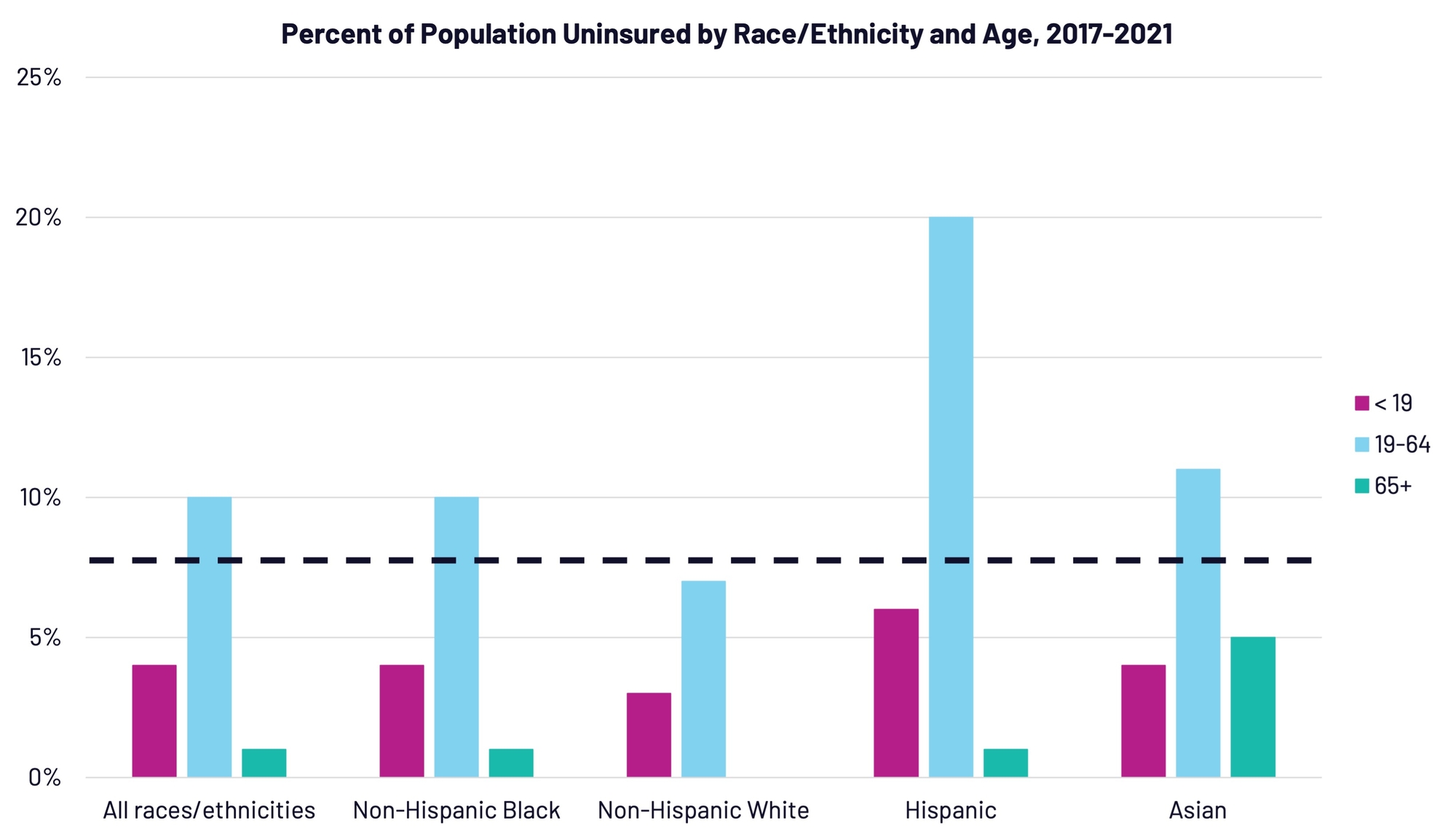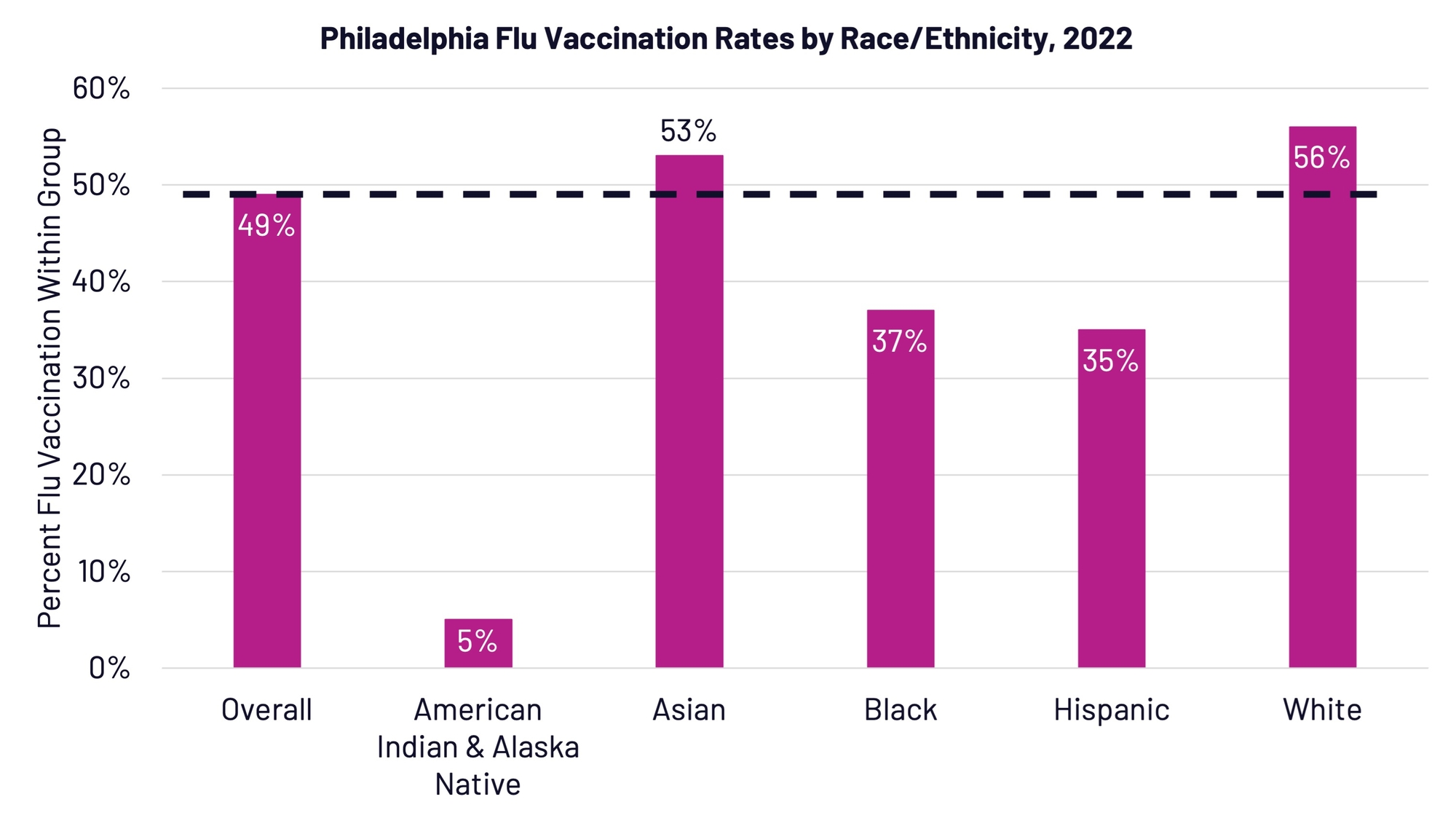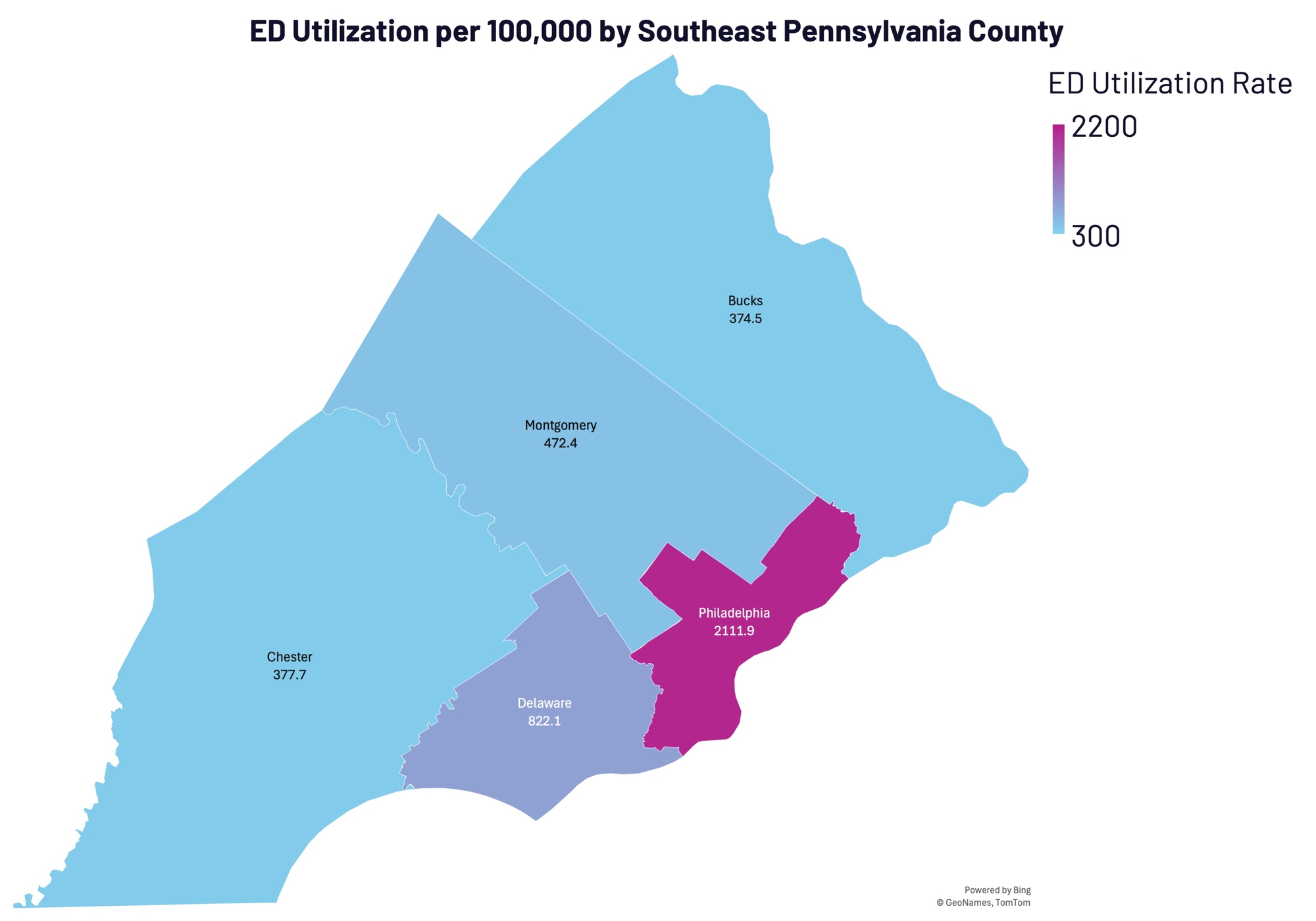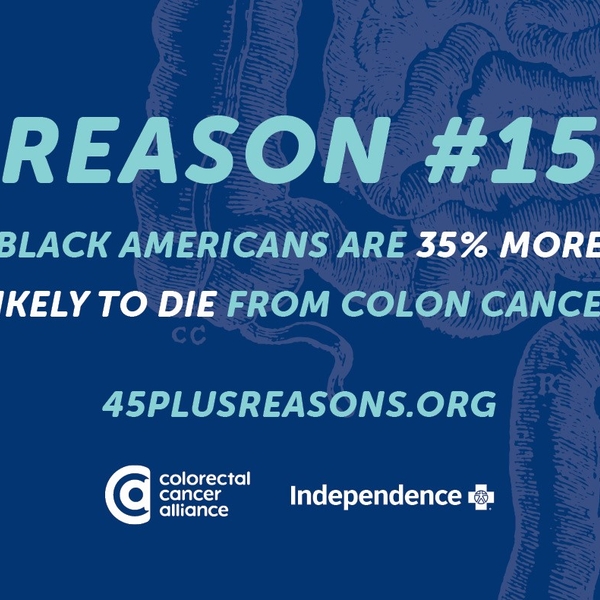Patients who are without health insurance, underinsured, or living in under-resourced neighborhoods are sometimes unable to access primary and specialty healthcare services due to systemic barriers. This lack of access makes them more likely to present to Emergency Departments with higher clinical acuity or to not seek care at all.
In the 2025 Regional Community Health Needs Assessment, Philadelphia community members identified significant barriers to accessing care, including scheduling and availability of providers, limited financial resources, perceptions of provider trustworthiness, quality of care, and accessibility of services (e.g., telehealth availability, cultural competence, and disability-related accommodations).
 Primary and Specialty Care
Primary and Specialty Care
Percentage of Adults Visiting a Doctor for Routine Checkup in Past Year, Percentage of Population Uninsured, Percentage of Flu Vaccination Rates, and Number of Preventable Hospital Stays
 Emergency Department
Emergency Department
Number of ED Visits by Patient per 100,000 Citizens
Key Metrics in Philadelphia
Hispanic Philadelphians ages 18 and younger and between the ages of 19 and 64 have the highest percentage of uninsured individuals. Notably, higher percentages of Non-Hispanic Black, Hispanic, and Asian adults aged 19-64 are uninsured compared to Non-Hispanic White Philadelphians.

Source: Philadelphia Department of Public Health (2023). Health of the City Report.

Source: County Health Rankings, 2025.
Among 2022 Medicare enrollees in Philadelphia, only 37 percent of Non-Hispanic Black Philadelphians and 35 percent of Hispanic Philadelphians received flu vaccinations compared to the overall city average of 49 percent. Flu vaccinations are recommended for all individuals 6 months and older, especially for patients who are pregnant or 65 years and older, to prevent serious flu-related illness.
Among Medicare enrollees in Philadelphia County, 4,070 hospital stays per 100,000 may have been prevented with outpatient treatment. Non-Hispanic White and Asian Philadelphians had fewer preventable hospital stays than average in 2022 compared to American Indian and Alaska Native, Non-Hispanic Black, and Hispanic Philadelphians. This suggests that Non-Hispanic Black, American Indian and Alaska Native, and Hispanic Philadelphians are accessing outpatient health services at lower rates compared to Non-Hispanic White and Asian Philadelphians.

Source: County Health Rankings, 2025.
Philadelphia County has significantly higher rates of high ED utilization compared to surrounding counties in Southeastern Pennsylvania, with 2111.9 high ED utilizers per 100,000. Individuals may rely on EDs for non-emergency health needs due to a lack of health insurance coverage, mistrust of healthcare providers and systems, and shortages in access to primary or specialty care providers.

Source: Regional Community Health Needs Assessment, 2025
A Comprehensive Approach to Reducing Disparities
Disparities in access to primary and specialty care are driven by biopsychosocial factors. These factors include social and cultural dimensions of communities and providers (language, perceptions of trust, perceived stigma/bias based on citizenship status), economic characteristics of households (income, employment, and insurance status), aspects of the physical environment (transportation access, walkability), and local healthcare infrastructure (hospitals and health centers, primary care physicians, wait times for providers).
These factors may contribute to delayed medical help-seeking and increased use of urgent, emergency department care, and inpatient hospitalizations due to higher acuity of presenting medical symptoms. Fear and mistrust of the healthcare system have also contributed to poor engagement in preventive health and primary care services, particularly within historically marginalized communities.





